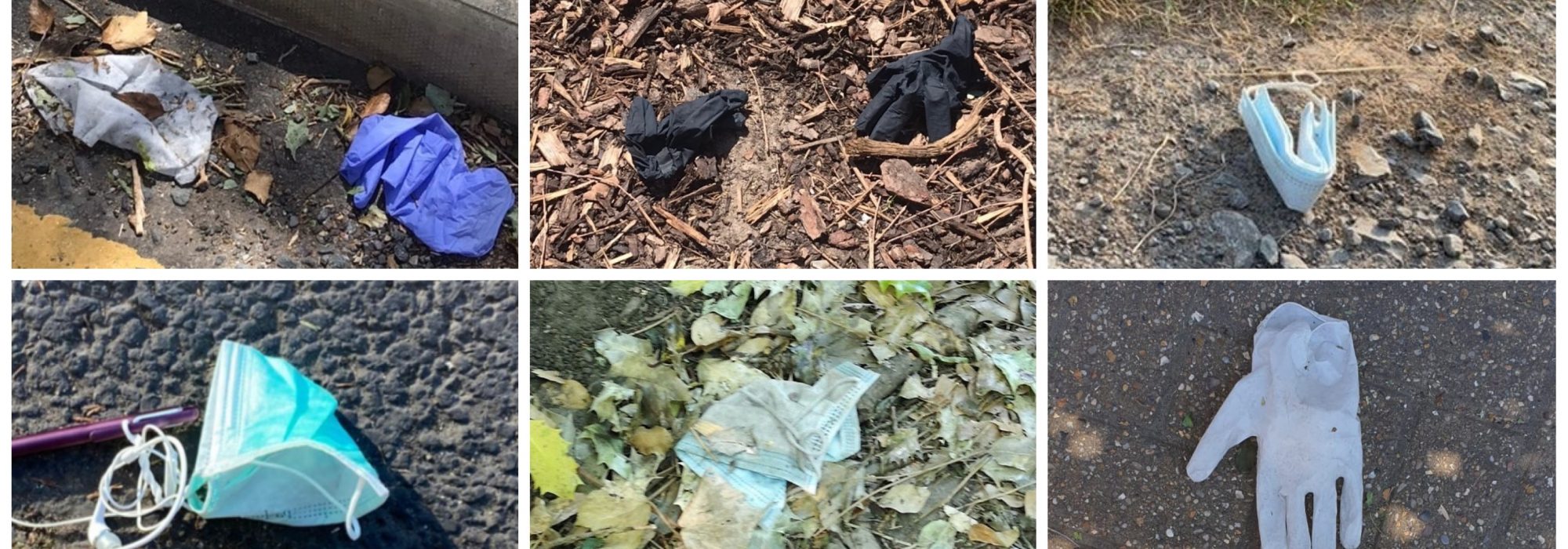Latest river Thames survey confirms COVID-19 plastic impact
COVID-19 driving increase in single-use plastic pollution
Date of release: 18 December 2020
London’s largest mass census of river plastic, the annual Thames River Watch Big Count, confirms that COVID-19 has increased the impact of single-use plastic on London’s largest blue-green space.
More than 1km (0.6miles) of Thames foreshore was surveyed by 40 Thames21 staff and volunteers, including staff working for Tideway, the company building London’s super sewer, contributing 280 hours to walk and score 100m sections of the river.
Every section of river was found to contain plastic, at an average of 322 pieces per 100m surveyed. COVID-19 related PPE – discarded plastic gloves and masks – were found on 70% of the stretches monitored, with an average of approximately six items per 100m. In some areas, the concentrations were much higher. Large quantities of PPE are accumulating on a section of the Isle of Dogs foreshore at 30 items per 100m.
The pandemic also appears to be driving an increase in single-use plastic pollution. More than 1,600 plastic cups were recovered from clean-ups between July and September, twice as many as the same period last year despite the fact that pubs and restaurants were closed between March and early July.
‘The response to COVID-19 has seen the move away from reusable to single-use items in the mistaken belief that these are safer,’ said AJ McConville, coordinator of Thames21’s award-winning plastic monitoring programme. ‘This means greater pollution of our waterways as well as greater carbon emissions from producing and transporting single-use plastic. The health of the Thames should not depend on volunteer clean-ups. We need to turn off the plastic tap at source.’
The GLA has created guidelines to tackle the PPE issue at source, encouraging Londoners to use and make reusable masks: https://www.london.gov.uk/coronavirus/face-covering-guidance
The survey also found that single-use plastic bottles were more widespread than previously thought, with 92% of the sections surveyed containing plastic bottles. More than 6,000 plastic bottles have been removed from the Thames since clean-ups resumed in July, bringing the total count since mid-2016 to more than 124,000 bottles.
‘The number of bottles that have been collected and removed from the River Thames really reflects the scale of the issue of plastic pollution here in London,’ said Alice Chamberlain, Project Coordinator of the #OneLess campaign which aims to reduce London’s single-use plastic footprint.
McConville said : ’The government needs to push ahead with a DRS system for drinks containers of all sizes and materials. Scotland is getting one next year, other European countries such as Germany have had DRS for nearly a decade – and PET bottles in Germany are now recycled at a rate of 99%. Meanwhile the government here is promising yet another consultation. Our rivers simply cannot wait.’
Thames21 is offering free COVID-safe training for Londoners wanting to help protect the river from plastic. Book here: thamesriverwatch@thames21.org.uk
Despite the huge public concern over plastic pollution, and the large amount in the Thames, there is no statutory monitoring of plastic impact on the Thames. Thames21’s Thames River Watch citizen science programme fills this gap by training Londoners to monitor their river and raise awareness.
The Thames River Watch programme is funded by Tideway.
